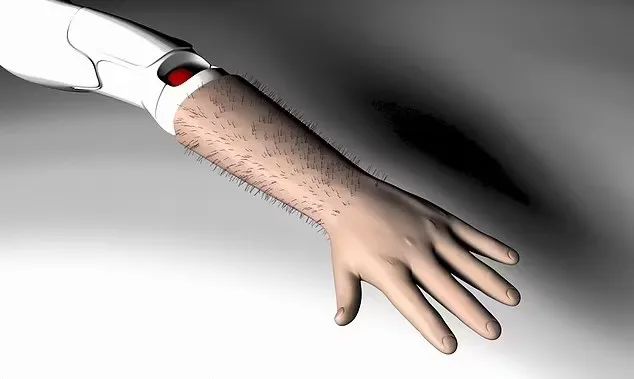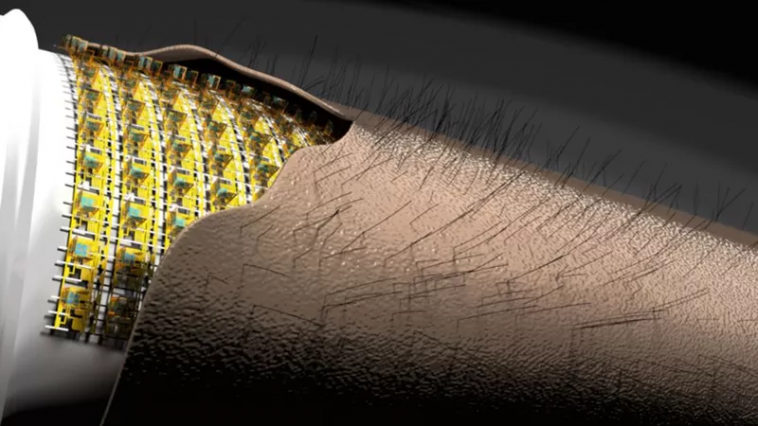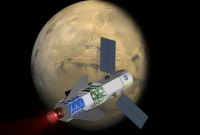I have seen a lot of robots, have you seen this?
With electronic hair, it can sense and even predict the direction of touch.
Yes, just like humans.
Although a bit “black technology”, a research team led by Professor Oliver G. Schmidt, Professor of Nanoelectronic Materials Systems and Scientific Director of the Research Center for Materials, Structures and Nanomembrane Integration (MAIN) at Chemnitz University of Technology, has explored a new approach to develop extremely sensitive and orientation-dependent 3D magnetic field sensors that can be integrated into electronic skin systems (active matrix).
The team used an entirely new approach to miniaturization and integration of 3D device arrays and took a major step toward mimicking the natural tactile sensation of human skin.
Christian Becker, PhD student in Prof. MAIN Schmidt’s research group and first author of the study, said: “Our method allows the precise spatial arrangement of functional sensor elements in 3D, which can be mass-produced in parallel manufacturing processes. Such sensors Systems are difficult to generate with established microelectronics manufacturing methods.”
The related research appeared in the latest issue of Nature Communications.
Origami technology integrates 3D sensors with microelectronic circuits
At the heart of the sensor system proposed by the research team is a so-called anisotropic magnetoresistive (AMR) sensor.
AMR sensors are mainly used to accurately determine changes in magnetic fields, and are currently mostly used for speed sensors in automobiles, or to determine the position and angle of moving parts in various machines.
To develop the highly compact sensor system, the researchers utilized a so-called “micro-origami process”. This process is used to fold the AMR sensor assembly into a 3D architecture that can resolve the magnetic field vector field in 3D. Micro-origami allows a large number of microelectronic components to be fit in a small space and arrange them into geometries that are impossible to achieve with any conventional micromachining techniques.
“The miniature origami process was developed more than 20 years ago, and it is great to see that the full potential of this technology can now be used for new microelectronic applications,” exclaims Professor Oliver G. Schmidt.
The research team integrated 3D miniature origami magnetic sensor arrays into a single active matrix, where each individual sensor can be conveniently addressed and read by microelectronic circuits.
“The combination of active-matrix magnetic sensors and self-assembling micro-origami architectures is a completely new approach to miniaturize and integrate high-resolution 3D sensing systems,” said Dr. Daniil Karnaushenko, who shared his views on the concept, design, and integration of the project. The implementation made a decisive contribution.
Tiny hairs predict and sense touch direction in real time
It is understood that the research team has successfully integrated a 3D magnetic field sensor with magnetic root hairs into an artificial electronic skin.
Electronic skins are made of elastic materials with electronics and sensors embedded in them, similar to organic skin interwoven with nerves.
When the hair is touched and bent, the underlying 3D magnetic sensor detects the movement and exact position of the magnetic roots. That is, the sensor matrix is not only able to record the bare movement of the hair, but also to determine the exact direction of the movement. Like real human skin, each hair on the electronic skin becomes a complete sensor unit that can sense and detect nearby changes.
Real-time magneto-mechanical coupling between 3D magnetic sensors and magnetic hair roots provides a new type of touch-sensitive perception via an electronic skin system. This ability is important when humans and robots work closely together. For example, robots can sense interactions with human companions in advance and provide many details before an intentional contact or accidental collision is imminent.
The Personification of Robots
In recent years, the anthropomorphism of robots has gradually become a new development trend.
For example, the robot Ameca launched by the British Engineered Arts team last year, which the team calls “the future side of robotics”, represents the highest level of human robotics.
Looking at this action expression like CG special effects, it is no wonder that many netizens think of the uncanny valley effect.
It is understood that the hardware and software of the robot are modularized, it is easy to upgrade and iterate, and it can also operate independently. That is to say, sometimes we don’t even need a complete robot, we can only control the head, or the arm, needs to be fulfilled.
According to the project team, AI is usually only a code-level content at present, and it is not as dramatic as a lifelike robot finished product. But at the software level, with AI programs and the accumulation of emoji technology at the hardware level, Ameca can establish an instant rapport with anyone.
At present, Ameca’s full set of exercise equipment is limited to the upper body, and the lower body is still under development.
In addition, in 2021, the Creative Machines Lab At Columbia Engineering in the United States published research on EVA robots. The new robot has a soft and expressive face that can respond to expressions such as smiles.
It is understood that the team used 3D printing to create the parts, which are precise and intricately integrated with the EVA’s skull. After weeks of debugging, EVA can make smiles, frowns, or looks upset with a certain authenticity. Subsequently, the researchers began to instruct EVA to use artificial intelligence to program facial movements, by “watching” expression-like videos, “reading” other people’s expressions through artificial intelligence, and then reflecting on their own “face”.
In 1970, the Uncanny Valley Effect, which depicts how humans feel about robots and non-human objects, was introduced. The theory states that if an entity is “not anthropomorphic enough,” its human-like features (such as a plush doll’s face) will stand out and be easily recognizable, making it easier for humans to like it. Conversely, if an entity is “enoughly anthropomorphic,” its non-humanoid features become prominent, creating an odd feeling in the eyes of a human observer.
Nowadays, with the advancement of science and technology, based on the uncanny valley effect, in the field that is more realistic than humanoid robots, some research results will be classified into the bottom of the uncanny valley, giving people that creepy feeling.
But maybe one day in the future, the uncanny valley effect will be surpassed with the development of technology, we will wait and see.




GIPHY App Key not set. Please check settings